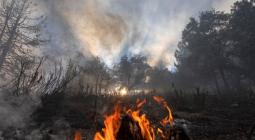Sixty years of climate change warnings: the signs that were missed (and ignored)
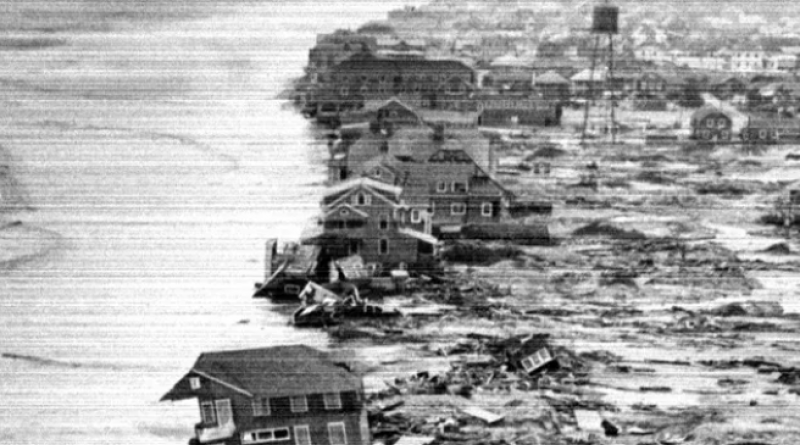
The effects of ‘weird weather’ were already being felt in the 1960s, but scientists linking fossil fuels with climate change were dismissed as prophets of doom.
In August 1974, the CIA produced a study on “climatological research as it pertains to intelligence problems”. The diagnosis was dramatic. It warned of the emergence of a new era of weird weather, leading to political unrest and mass migration (which, in turn, would cause more unrest). The new era the agency imagined wasn’t necessarily one of hotter temperatures; the CIA had heard from scientists warning of global cooling as well as warming. But the direction in which the thermometer was travelling wasn’t their immediate concern; it was the political impact. They knew that the so-called “little ice age”, a series of cold snaps between, roughly, 1350 and 1850, had brought not only drought and famine, but also war – and so could these new climatic changes.
“The climate change began in 1960,” the report’s first page informs us, “but no one, including the climatologists, recognised it.” Crop failures in the Soviet Union and India in the early 1960s had been attributed to standard unlucky weather. The US shipped grain to India and the Soviets killed off livestock to eat, “and premier Nikita Khrushchev was quietly deposed”.
But, the report argued, the world ignored this warning, as the global population continued to grow and states made massive investments in energy, technology and medicine.
Meanwhile, the weird weather rolled on, shifting to a collection of west African countries just below the Sahara. People in Mauritania, Senegal, Mali, Burkina Faso, Niger and Chad “became the first victims of the climate change”, the report argued, but their suffering was masked by other struggles – or the richer parts of the world simply weren’t paying attention. As the effects of climate change started to spread to other parts of the world, the early 1970s saw reports of droughts, crop failures and floods from Burma, Pakistan, North Korea, Costa Rica, Honduras, Japan, Manila, Ecuador, USSR, China, India and the US. But few people seemed willing to see a pattern: “The headlines from around the world told a story still not fully understood or one we don’t want to face,” the report said.

This claim that no one was paying attention was not entirely fair. Some scientists had been talking about the issue for a while. It had been in newspapers and on television, and was even mentioned in a speech by US president Lyndon Johnson in 1965. A few months before the CIA report was issued, the US secretary of state, Henry Kissinger, had addressed the UN under a banner of applying science to “the problems that science has helped to create”, including his worry that the poorest nations were now threatened with “the possibility of climatic changes in the monsoon belt and perhaps throughout the world”.
Still, the report’s authors had a point: climate change wasn’t getting the attention it could have, and there was a lack of urgency in discussions. There was no large public outcry, nor did anyone seem to be trying to generate one.
Although initially prepared as a classified working paper, the report ended up in the New York Times a few years later. By this point, February 1977, the problem of burning fossil fuels was seen more through the lens of the domestic oil crisis rather than overseas famine. The climate crisis might still feel remote, the New York Times mused, but as Americans feel the difficulties of unusual weather combined with shortages of oil, perhaps this might unlock some change? The paper reported that both energy and climate experts shared the hope “that the current crisis is severe enough and close enough to home to encourage the interest and planning required to deal with these long-range issues before the problems get too much worse”.
And yet, if anything, debate about climate change in the last third of the 20th century would be characterised as much by delay as concern, not least because of something the political analysts at the CIA seem to have missed: fightback from the fossil fuel industries.
When it came to constructing that delay, the spin doctors could find building materials readily available within the scientific community itself. In 1976, a young climate modeller named Stephen Schneider decided it was time for someone in the climate science community to make a splash. As a graduate student at Columbia University, Schneider wanted to find a research project that could make a difference. While hanging out at the Nasa Goddard Institute for Space Studies, he stumbled across a talk on climate models. He was inspired: “How exciting it was that you could actually simulate something as crazy as the Earth, and then pollute the model, and figure out what might happen – and have some influence on policy in a positive way,” he later recalled.
After years of headlines about droughts and famine, Schneider figured the time was right for a popular science book on the danger climate change could cause. The result was his 1976 book, The Genesis Strategy. Although he wanted to avoid positioning himself alongside either what he called the “prophets of doom” on one side or the “Pollyannas” on the other, he felt it was important to impart the gravity of climate change and catch people’s attention.
And attention it got, with a jacket endorsement from physicist Carl Sagan, reviews in the Washington Post and New York Times, and an invitation to appear on Johnny Carson’s Tonight Show. This rankled some of the old guard, who felt this just wasn’t the way to do science. Schneider’s book drew an especially scathing attack from Helmut Landsberg, who had been director of the Weather Bureau’s office of climatology, and was now a well-respected professor at the University of Maryland.
Landsberg reviewed the book for the American Geophysical Union, calling it a “wide-ranging potpourri of science, nature and politics”, and “multidisciplinary, as promised, but also very undisciplined”. Landsberg disliked what he saw as an activist spirit in Schneider, believing that climate scientists should stay out of the public spotlight, especially when it came to the uncertainties of climate modelling. He would only endanger the credibility of climatologists, Landsberg worried; much better to stay collecting data to iron out as many uncertainties as possible, only guardedly briefing politicians behind closed doors when absolutely needed. In an example of first-class scientific bitching, Landsberg concluded his review by noting that Schneider advocated scientists running for public office, and that perhaps he had better try that himself – but that if he did want to be a serious scientist, “one might suggest that he spend less time going to the large number of meetings and workshops that he seems to frequent” and join a scientific library.
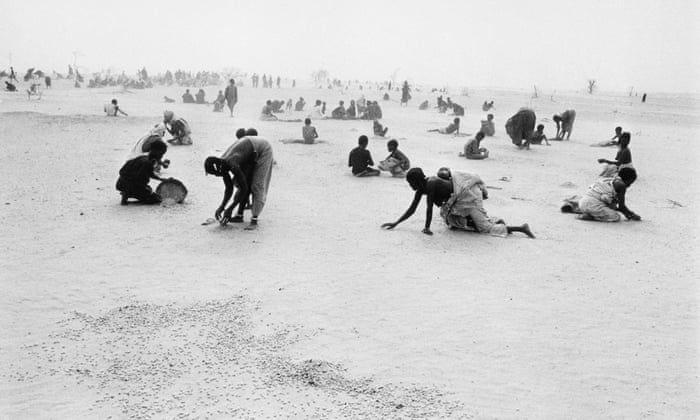
In part, it was a generational clash. Schneider belonged to a younger, more rebellious cohort, happy to take science to the streets. In contrast, Landsberg had spent a career working carefully with government and the military, generally behind closed doors, and was scared that public involvement might disrupt the delicate balance of this relationship. What’s more, the cultural norms of scientific behaviour that expect a “good” scientist to be guarded and avoid anything that smells remotely of drama were deeply embedded – even when, like any deeply embedded cultural norm, they can skew the science. Landsberg was far from the only established meteorologist bristling at all this new attention given to climate change. Some felt uneasy about the drama, while others didn’t trust the new technologies, disciplines and approaches being used.
In the UK, the head of the Met Office, John Mason, called concern about climate change a “bandwagon” and set about trying to “debunk alarmist US views”. In 1977 he gave a public talk at the Royal Society of Arts, stressing that there were always fluctuations in climate, and that the recent droughts were not unprecedented.
He agreed that if we were to continue to burn fossil fuels at the rate we were, we might have 1C warming, which he thought was “significant”, in the next 50-100 years; but on the whole, he thought, the atmosphere was a system that would take whatever we threw at it. Plus, like many of his contemporaries, he figured we would all move over to nuclear power, anyway. Writing up the talk for Nature, John Gribbin described the overall message as “don’t panic”. He reassured readers there was no need to listen to “the prophets of doom”.
Change was coming, though, and it would be a combination of an establishment scientist and an activist that would kick it off . An obscure 1978 US Environmental Protection Agency report on coal ended up on the desk of Rafe Pomerance, a lobbyist at the DC offices of Friends of the Earth. It mentioned the “greenhouse effect”, noting that fossil fuels could have significant and damaging impacts on the atmosphere in the next few decades.
He asked around the office and someone handed him a recent newspaper article by a geophysicist called Gordon MacDonald. MacDonald was a high-ranking American scientist who had worked on weather modification in the 1960s as an advisor to Johnson. In 1968 he had written an essay called How to Wreck the Environment, imagining a future in which we had resolved threats of nuclear war but instead weaponised the weather. Since then he had watched people do this – not deliberately, as a means of war, but more carelessly, simply by continuing to burn fossil fuels.
More importantly, MacDonald was also a “Jason” – a member of a secret group of elite scientists who met regularly to give the government advice, outside of the public eye. The Jason group had met to discuss carbon dioxide and climate change in the summers of 1977 and 1978, and MacDonald had appeared on US TV to argue that the earth was warming.
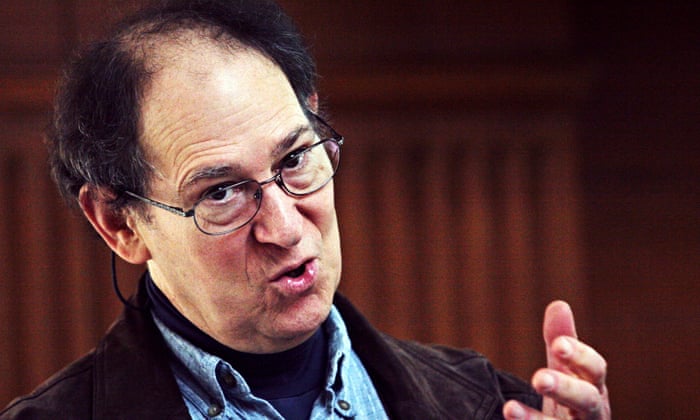
You might imagine there was some culture clash between Pomerance, a Friends of the Earth lobbyist, and MacDonald, a secret military scientist, but they made a powerful team. They got a meeting with Frank Press, the president’s science advisor, who brought along the entire senior staff of the US Office of Science and Technology. After MacDonald outlined his case, Press said he would ask the former head of the meteorology department at MIT, Jule Charney, to look into it. If Charney said a climate apocalypse was coming, the president would act.
Charney summoned a team of scientists and officials, along with their families, to a large mansion at Woods Hole, on the south-western spur of Cape Cod. Charney’s brief was to assemble atmospheric scientists to check the Jasons’ report, and he invited two leading climate modellers to present the results of their more detailed, richer models: James Hansen at the Goddard Institute for Space Studies at Columbia University in New York, and Syukuro Manabe of the Geophysical Fluid Dynamics Lab in Princeton.
The scientific proceedings were held in the old carriage house of the mansion, with the scientists on a rectangle of desks in the middle and political observers around the side. They dryly reviewed principles of atmospheric science and dialled in Hansen and Manabe. The two models offered slightly different warnings about the future, and in the end, Charney’s group decided to split the difference. They felt able to say with confidence that the Earth would warm by about 3C in the next century, plus or minus 50% (that is, we would see warming between 1.5C or 4C). In their report of November 1979, Science magazine declared: “Gloomsday predictions have no fault.”
By the mid-1970s, the biggest oil company in the world, Exxon, was starting to wonder if climate change might finally be about to arrive on the political agenda and start messing with its business model. Maybe it was the reference in the Kissinger speech, or Schneider’s appearance on the Tonight Show. Or maybe it was just that the year 2000 – the point after which scientists warned things were going to start to hurt – didn’t seem quite so far off.
In the summer of 1977, James Black, one of the top science advisors at Exxon, made a presentation on the greenhouse effect to the company’s most senior staff. This was a big deal: executives at that level would only want to know about science that would affect the bottom line. The same year, the company hired Edward David Jr to head up their research labs. He had learned about climate change while working as an advisor to Nixon. Under David, Exxon started to build a small research project on carbon dioxide. Small, at least, by Exxon standards – at $1m a year, it was a good chunk of cash, just not much compared with the $300m a year the company spent on research at large.
In December 1978, Henry Shaw, the scientist leading Exxon’s carbon dioxide research, wrote in a letter to David that Exxon “must develop a credible scientific team” one that can critically evaluate science that comes in on the topic, and “be able to carry bad news, if any, to the corporation”.
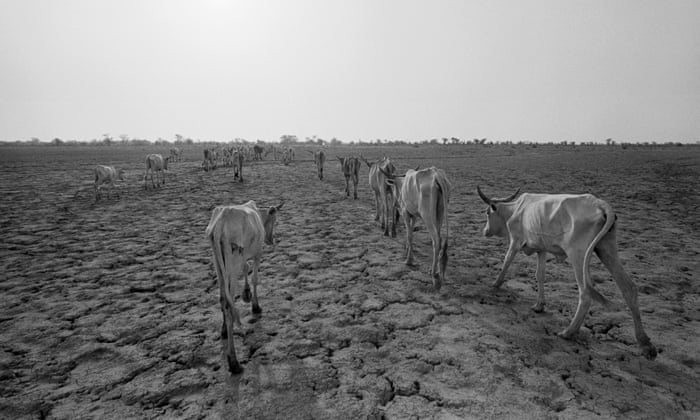
Exxon fitted out one of its largest supertankers with custom-made instruments to do ocean research. Exxon wanted to be taken seriously as a credible player, so wanted leading scientists on board, and was willing to ensure they had scientific freedom. Indeed, some of the work they undertook with oceanographer Taro Takahashi would be later used in a 2009 paper concluding that the oceans absorb only 20% of carbon dioxide emitted from human activities. This work earned Takahashi a Champion of the Earth prize from the UN.
In October 1982, David told a global warming conference financed by Exxon: “Few people doubt that the world has entered an energy transition, away from dependence upon fossil fuels and toward some mix of renewable resources that will not pose problems of CO2 accumulation.”
The only question, he said, was how fast this would happen. Maybe he really saw Exxon as about to lead the way on innovation to zero-carbon fuels, with his R&D lab at the centre of it. Or maybe the enormity of the challenge hadn’t really sunk in. Either way, by the mid-1980s the carbon dioxide research had largely dried up.
When Ronald Reagan was elected in November 1980, he appointed lawyer James G Watt to run the Department of the Interior. Watt had headed a legal firm that fought to open public lands for drilling and mining, and already had a reputation for hating conservation projects, as a matter of policy and of faith. He once famously described environmentalism as “a leftwing cult dedicated to bringing down the type of government I believe in”. The head of the National Coal Association pronounced himself “deliriously happy” at the appointment, and corporate lobbyists started joking: “How much power does it take to stop a million environmentalists? One Watt.”
Watt didn’t close the EPA, as people initially feared he would, but he did appoint Anne Gorsuch, an anti-regulation zealot who cut it by a quarter. Pomerance and his colleagues in the environmental movement were going to be busy. They didn’t exactly have much time for picking up that lingering and still quite abstract problem of climate change. It would still be a while before Pomerance would see a public movement for climate action.
Just before the November 1980 election, the National Academy of Sciences (NAS) had set up a new Carbon Dioxide Assessment Committee to do a follow-up to the Charney report. The chair was Bill Nierenberg, one of the generation of scientists who, like Helmut Landsberg, had been through both the war and the subsequent boom in science funding. He was quite at home working with the government and military. He was even a Jason. He had been a fierce defender of the Vietnam war, which had set him apart from some of his colleagues, and he was still bitter about some of the leftwing protests on campus at the end of the 1960s, and the pushback against military-sponsored science that they had inspired. He also hated the environmentalist movement, which he saw as a band of Luddites, especially on the issue of nuclear power. In many ways, he must have seemed like the perfect person to lead a review that would report back to the new President Reagan.
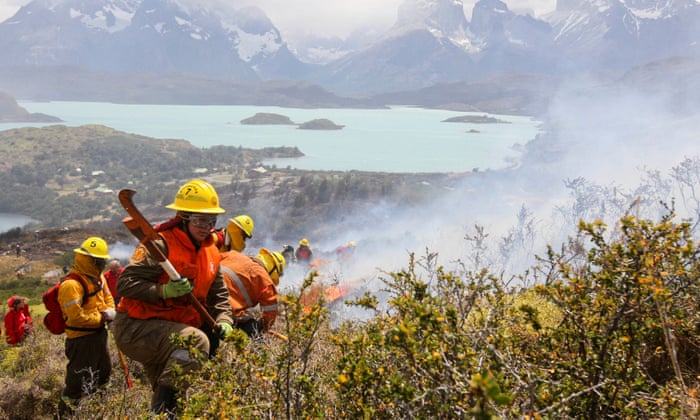
Nierenberg decided to build his report around a mix of economics and science. In theory, this should have been brilliant. But when it came to publication, the two sides did not cohere. The writers had not worked together, but rather been sent off to be scientists in one corner and economists in another. It has been described as a report of two quite different views – five chapters by scientists that agreed global warming was a major problem, and then two more by economists that focused on the uncertainty that still existed about the physical impacts, especially beyond the year 2000, and even greater uncertainty about how this would play out economically. What’s more, it was the economists’ take on things that got to frame the report, as the first and last chapters, and whose analysis dominated the overall message. Nierenberg seemed to be advocating a wait-and-see approach. There is no particular solution to the problem, he argued at the start of the report, but we can’t avoid it: “We simply must learn to deal more effectively with their twists and turns as they unfold.”
For their 2010 book about climate scepticism, Merchants of Doubt, Naomi Oreskes and Erik Conway dug out the peer-review notes on Nierenberg’s report from the NAS archives. One of the reviews was from Alvin Weinberg, a physicist who had been raising concerns about climate change since the 1970s, and he was less than impressed. In fact, it might be better to say he was appalled by the stance Nierenberg had taken. At one point the report had suggested people would probably adapt, largely by moving. People had migrated because of climate change in the past, it argued, and they would manage again: “It is extraordinary how adaptable people can be,” the report muses.
Weinberg was scathing: “Does the committee really believe the United States or Western Europe or Canada would accept the huge influx of refugees from poor countries that have suffered a drastic shift in rainfall pattern?” Oreskes and Conway did some digging into the reviews and noted that Weinberg’s was not the only negative one (although the others were slightly more polite). Puzzled as to why these criticisms were not responded to, a senior scientist later explained to them: “Academy review was much more lax in those days.”
In the end, the report was launched in October 1983, at a formal gala with cocktails and dinner at the NAS’s cathedral-like Great Hall. Peabody Coal, General Motors and Exxon were all on the invite list – and Pomerance managed to sneak in via the press conference. The White House had briefed the Academy from the get-go, making it clear it did not approve of speculative, alarmist or “wolf-crying” scenarios; that it thought technology would find the answer and it did not expect to do anything other than fund research and see what happened. The NAS knew these people would be in charge for the next few years, and possibly figured that the best idea was to give them the most scientific version they could find of what the White House wanted. Or possibly it simply was what Nierenberg believed. Either way, from the perspective of today, it’s hard not to see it as a big misstep.
The report’s introduction stated up front: “Our stance is conservative: we believe there is reason for caution, not panic.” At the press conference, Roger Revelle, the first scientist to brief Congress on the climate crisis, back in 1957, told reporters they were flashing an amber light, not a red one. And so, the Wall Street Journal reported: “A panel of top scientists has some advice for people worried about the much-publicised warming of the Earth’s climate: you can cope.”
Where were the activists in all of this? Where was that big public movement for action on climate change that campaigners such as Pomerance were longing for? Environmental groups were booming, both in mainstream NGOs and more radical groups, but they tended to focus on other environmental issues, such as saving the whale or the rainforests, or fighting road-building. It wasn’t really until the 2000s that we saw the emergence of climate-specific groups and climate dominating the larger NGOs’ portfolios.
If anything, the first really active, explicit climate campaigners were the sceptics. Climate scepticism is as old as climate science itself, and in the early days it was an entirely sensible position. It is normal for scientists to raise a quizzical eyebrow when something new is presented to them. The oil industry took this natural scientific scepticism and tapped it.

But just as the consensus about the greenhouse effect was starting to harden, and the sceptics starting to fall away, in the 1980s, there was a deliberate, organised effort to amplify that natural doubt, extend it, and use it to dismiss and distract from warnings to take action on climate change. And that wasn’t science, even if on occasion it used scientists – that was PR. It did not necessarily mean creating phoney science. (That could work, too, but would only get you so far.) You would fund real scientists, but in a way that would confuse and muddy the message. They had done this before, with air pollution in the 1940s, and their PR companies had picked up a trick or two from fights about the links between tobacco and cancer.
The chief executives of the major oil companies met and agreed to set aside funds – only $100,000 for now, but it would grow – to work on climate policy, establishing the very legitimate-sounding Global Climate Coalition. Before long, groups such as this started to proliferate – the Information Council on the Environment, the Cooler Heads Coalition, the Global Climate Information Project – and any science-smelling voice expressing sceptical views was amplified. Bill Nierenberg was a particular favourite. The delayers knew their best strategy was to get involved in the scientific and policy debate – it was there that they would be best placed to push the uncertainties and question regulations. Sometimes fossil fuel companies and their defenders get painted as “anti-science”. In truth they run on science, and always have done – they are just strategic about which bits of it they use.
One of the hardest parts of writing about the history of the climate crisis was stumbling across warnings from the 1950s, 60s and 70s, musing about how things might get bad sometime after the year 2000 if no one did anything about fossil fuels. They still had hope back then. Reading that hope today hurts.
We are now living our ancestors’ nightmares, and it didn’t have to be this way. If we are looking to apportion blame, it is those who deliberately peddled doubt that should be first in line. But it is also worth looking at the cultures of scientific work that have developed over centuries, some of which could do with an update. The doubt-mongers manipulated positive forces in science – such as scepticism – for their own ends, but they also made use of other resources, exacerbating generational divides, exploiting the scientific community’s tendency to avoid drama, and steering notions about who were legitimate political partners (eg governments) and who were not (activists).
Scientists working on climate change have been put in an incredibly difficult position. They should have been given time, expert support and a decent budget to think about the multiple challenges and transformations that happen when you take a contentious bit of science out of the scientific community and put it in the public sphere. They should have been given that support from government, but they also needed the gatekeepers within the scientific community to help them, too. And yet, if anything, many of these scientists have been ridiculed by their colleagues for speaking to media or – perish the thought – showing emotion.
As citizens of the 21st century, we have inherited an almighty mess, but we have also inherited a lot of tools that could help us and others survive. A star among these tools – sparkling alongside solar panels, heat pumps, policy systems and activist groups – is modern climate science. It really wasn’t all that long ago that our ancestors simply looked at air and thought it was just that – thin air – rather than an array of different chemicals; chemicals that you breathe in or out, that you might set fire to or could get high on, or that might, over several centuries of burning fossil fuels, have a warming effect on the Earth.
When climate fear starts to grip, it is worth remembering that we have knowledge that offers us a chance to act. We could, all too easily, be sitting around thinking: “The weather’s a bit weird today. Again.”
This is an edited extract from Our Biggest Experiment: An Epic History of the Climate Crisis by Alice Bell, published on 8 July by Bloomsbury and available at guardianbookshop.co.uk



